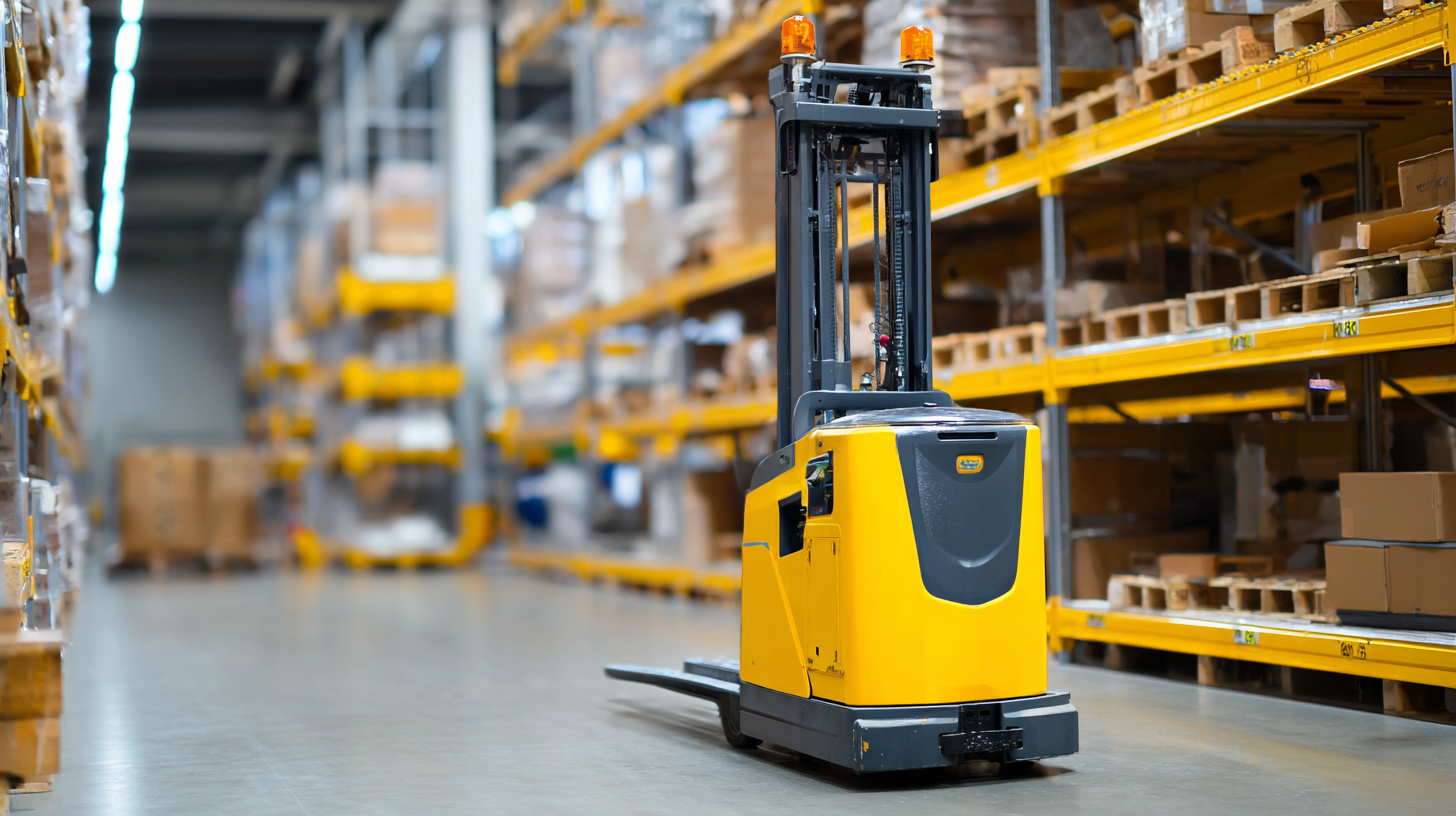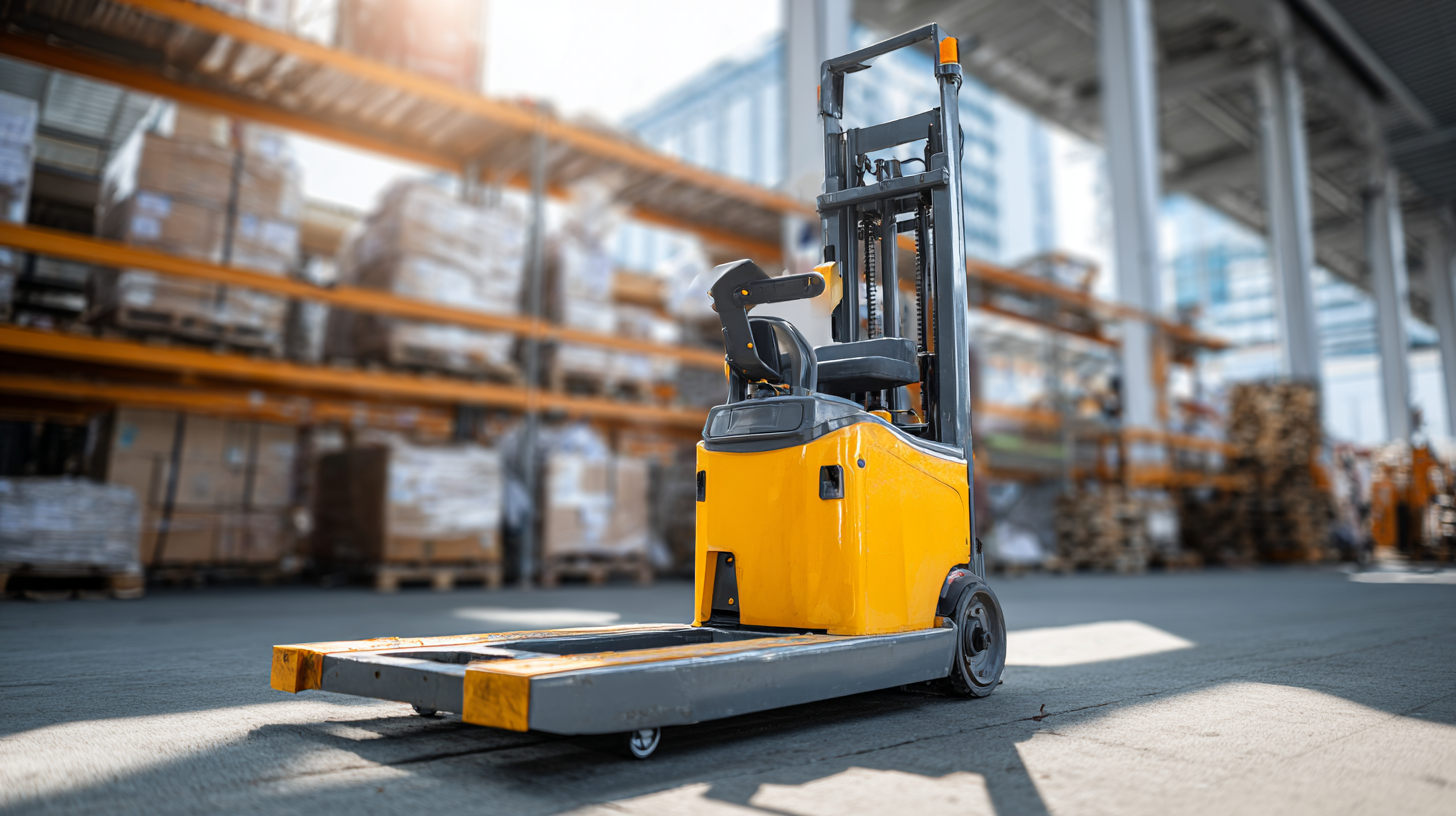Leave Your Message
As the warehousing industry continues to evolve, the demand for efficient and innovative handling equipment is on the rise. According to industry reports, the global pallet jack market is projected to grow significantly, driven by the increasing need for automation and productivity in logistics.

Among the various types of pallet jacks, the Microlift Pallet Jack stands out due to its exceptional maneuverability and compact design, making it ideal for modern warehousing environments. With a focus on after-sales service benefits and maintenance costs, understanding the long-term value of investing in high-quality Microlift Pallet Jacks is crucial.
Companies are increasingly recognizing that superior after-sales support can lead to reduced downtime and lower repair costs, ultimately enhancing operational efficiency. This blog delves into these insights and highlights exemplary cases demonstrating the effectiveness of Microlift Pallet Jacks in contemporary warehousing setups.
The Evolution of Microlift Pallet Jack Technology in Warehousing has been remarkable, reflecting the continuous advancements in the logistics and warehousing sector. With increasing demands for efficiency and precision, microlift pallet jacks have adopted sophisticated technologies that enhance their usability and performance. These innovations include improved motor systems, ergonomic designs, and smart features that provide real-time data analytics, making it easier for workers to operate efficiently in confined spaces.
To maximize the benefits of these advanced pallet jacks, it’s essential to adopt best practices. One key tip is to regularly train your staff on the latest features and functionalities of the equipment. This ensures they can leverage the technology to its fullest potential, reducing the risk of accidents and improving overall productivity. Additionally, regular maintenance checks can extend the lifespan of your microlift pallet jacks while preventing unexpected breakdowns that could disrupt operations.
Another tip for optimizing the use of microlift pallet jacks is to integrate them with warehouse management systems. This integration allows for seamless tracking of inventory and streamlining operations. When deployed effectively, microlift pallet jacks not only enhance productivity but also contribute to a safer and more organized working environment in modern warehousing.
In the rapidly evolving landscape of modern warehousing, microlift pallet jacks have emerged as indispensable tools, driven by stringent industry standards that prioritize both design and safety. These standards dictate various aspects of the equipment, from the lifting capacity to ergonomic features, ensuring that operators can perform their tasks efficiently while minimizing the risk of injury. Compliance with these guidelines not only enhances worker safety but also boosts productivity by allowing for smoother movements of goods within facilities.
Another key factor influencing the design of microlift pallet jacks is the integration of advanced technology. Industry leaders are increasingly focusing on features such as electric lifting mechanisms and smart controls that provide real-time data about load weight and operational efficiency. These innovations not only align with industry standards but also enhance user experience by offering intuitive interfaces and improved maneuverability. As businesses adapt to the demands of e-commerce and just-in-time inventory systems, the emphasis on technologically advanced, compliant microlift pallet jacks will undoubtedly shape the future of warehousing operations.
When selecting the right microlift pallet jack for your warehouse, it's essential to consider both your operational needs and the features that enhance efficiency. Microlift pallet jacks are designed to handle lighter loads while elevating them to a comfortable height for stacking or transporting. Start by assessing the weight capacity required for your specific tasks and ensure that the pallet jack you choose can handle those loads effectively.

Tip 1: Pay attention to the lift height. Different models offer various lifting ranges. Choose a microlift pallet jack that can reach the height necessary for your storage racking systems to minimize lifting strain on your workforce.
Additionally, evaluate the maneuverability and dimensions of the microlift pallet jack. A compact design may be beneficial in a tight warehouse environment, allowing for greater agility and ease of use. The wheel type and material also significantly influence the smoothness of operation.
Tip 2: Opt for models with polyurethane wheels if your flooring is hard and smooth, as they provide a quieter ride and better traction. Conversely, if your environment has rough terrain, consider rubber wheels for enhanced durability and stability.
Ultimately, understanding your warehouse flow and operational requirements will help you make an informed decision when choosing a microlift pallet jack that aligns perfectly with your needs.
The warehousing industry is on the brink of a significant transformation, with innovative features in microlift pallet jacks playing a pivotal role in enhancing operational efficiency.
According to a recent report by the Material Handling Industry of America (MHIA), adopting advanced material handling solutions can increase productivity by up to 25% in distribution centers. Microlift pallet jacks are at the forefront of this shift, integrating smart technology that allows for seamless maneuverability and precise load handling, ensuring quicker responses to dynamic warehouse demands.
One of the most noteworthy advancements is the integration of IoT elements in microlift pallet jacks, offering real-time data tracking and analytics. A study by logistics consultancy Armstrong & Associates highlights that companies employing intelligent material handling systems can achieve a 15% reduction in operational costs.
Features such as adjustable lift heights and ergonomic designs further contribute to minimizing strain on operators, enhancing safety and promoting a healthier work environment. As the trend towards automation and smart warehousing accelerates, the microlift pallet jack stands out as a vital tool for future-proofing warehouse operations and driving efficiency to new heights.
Maintaining your microlift pallet jack is crucial for ensuring its longevity and reliability in the fast-paced environment of modern warehousing. Regular maintenance not only helps in preventing unexpected breakdowns but also enhances performance, making your operations smoother. Identifying wear and tear early on can save significant costs and downtime. Routine checks should include inspecting the hydraulic system for leaks, ensuring wheels are well-aligned and in good condition, and cleaning the frame to prevent rust and corrosion.
Moreover, proper training for operators is paramount. When team members are knowledgeable about the correct operation and maintenance procedures of microlift pallet jacks, they are less likely to misuse the equipment, which can lead to premature wear. Implementing a routine servicing schedule, along with adhering to best practices outlined by manufacturers, can significantly extend the lifespan of this essential equipment. Investing time in maintenance will ensure that your microlift pallet jack remains an efficient part of your warehousing operations for years to come.

